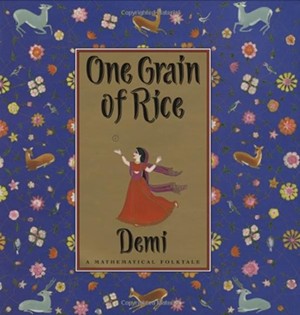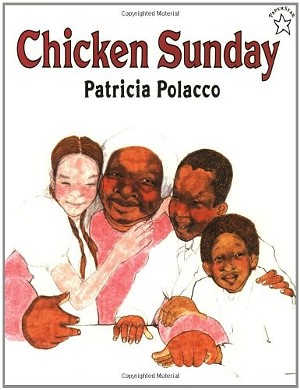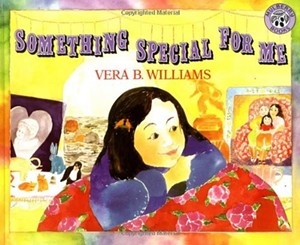Money management is one of the most important and practical skills a person can learn, but it's often given short shrift in schools, especially at the elementary level. The Vermont State Treasurer's Office is trying to change that with its Reading is an Investment program, which aims to teach kids about basic financial concepts such as saving money and following a budget, while also promoting literacy.
According to the office's website, 128 elementary schools and 22 public libraries statewide are participating in the program this year. Students in kindergarten through sixth grade read at least three books that deal indirectly or directly with money from a list of 71 titles provided. If they complete a form documenting which books they've read — as well as a a reading log showing they've read a required number of minutes — they are entered into a drawing to win one of 20 $250 college savings plans. The contest deadline is March 15th.
When my first-grade daughter, Mira, brought home the Reading is an Investment papers, I was eager to check out the books on the list. There's a wide range of literature represented, from preschool favorite Rosemarie Wells' Max's Bunny Business to Gary Paulsen's slim novel about a 12-year-old entrepreneur, Lawn Boy. We've read three of the recommended books in the past week. Here's a little more about the titles we selected.
 One Grain of Rice by Demi
One Grain of Rice by Demi
Set in India, this mathematical folk tale tells the story of a power-happy raja who decrees that the rice farmers in his province must give nearly all of their rice to him so he can store it safely in case of famine. But when famine strikes, the raja hoards the rice for himself. A quick-witted village girl, Rani, tricks the raja into giving her one grain of rice, then giving her double the amount she received the day before every day for 30 days. The raja assumes it won't add up to much, but by day 30, the raja has to give Rani 536,870,912 grains of rice, effectively cleaning him out and returning the rice to its rightful owners. It's an engaging and satisfying tale of an underdog triumphing over corruption. It's also cool for kids to see how quickly numbers escalate when they are doubled over and over again; There's a nifty chart in the back of the book that illustrates this. On the reading list, the book is recommended for ages 9 to 12, but my nearly 7-year-old daughter lapped it up. And it spurred an interesting bedtime discussion about why people keep their money in banks versus just stashing it under mattresses.
[jump]
Chicken Sunday by Patricia Polacco 
Polacco has written and illustrated more than 50 books for children that deal with sensitive topics such as learning disabilities and racism, many based on her own experiences growing up. It's rare I finish one of her stories without getting a bit choked up. Chicken Sunday is no exception. Polacco tells the tale of young Patricia and her two neighborhood friends, Stewart and Winston. They want to buy a special Easter hat for the boys' grandmother, Miss Eula, whom Patricia loves so much that she considers her a second grandma. Problem is, they don't have enough money saved up. So the kids make special painted Ukranian eggs and sell them in the hat shop of Mr. Kodinski, a gruff old Russian man. When they've earned enough to buy the hat, Mr. Kodinski surprises the children by giving it to them for free. Ms. Eula is so touched by the children's thoughtful gift that she cries tears of joy when she opens it. This book is so emotionally charged that it was hard for me to change gears and bring up the topic of money while we were reading it. But it's a sweet and heart-warming read that illustrates what it really means to be kind and generous.

Something Special for Me by Vera B. Williams
This book — a follow-up to Williams' Caldecott Honor book, A Chair For My Mother — was written more than 30 years ago, but it has a timeless appeal. In it, Rosa and her mama, a waitress at the Blue Tile Diner, keep a big money jar on a shelf in their apartment. Mama puts tips in the jar when she comes home from work, and Rosa, her grandma, aunt and uncle all drop spare change in the jar whenever they have it. Rosa's birthday is coming up, and mama suggests Rosa use the money in the jar to buy something special. But when Rosa goes shopping downtown she has a hard time figuring out something worth emptying the big jar for. After almost purchasing roller skates, then a pretty outfit, then a tent and sleeping bag, she finally decides on a secondhand accordion like her grandma used to play. I appreciated the message this book sent about spending money mindfully. It also spurred a conversation about what tipping is, which I hadn't realized Mira didn't understand before.
According to the office's website, 128 elementary schools and 22 public libraries statewide are participating in the program this year. Students in kindergarten through sixth grade read at least three books that deal indirectly or directly with money from a list of 71 titles provided. If they complete a form documenting which books they've read — as well as a a reading log showing they've read a required number of minutes — they are entered into a drawing to win one of 20 $250 college savings plans. The contest deadline is March 15th.
When my first-grade daughter, Mira, brought home the Reading is an Investment papers, I was eager to check out the books on the list. There's a wide range of literature represented, from preschool favorite Rosemarie Wells' Max's Bunny Business to Gary Paulsen's slim novel about a 12-year-old entrepreneur, Lawn Boy. We've read three of the recommended books in the past week. Here's a little more about the titles we selected.

Set in India, this mathematical folk tale tells the story of a power-happy raja who decrees that the rice farmers in his province must give nearly all of their rice to him so he can store it safely in case of famine. But when famine strikes, the raja hoards the rice for himself. A quick-witted village girl, Rani, tricks the raja into giving her one grain of rice, then giving her double the amount she received the day before every day for 30 days. The raja assumes it won't add up to much, but by day 30, the raja has to give Rani 536,870,912 grains of rice, effectively cleaning him out and returning the rice to its rightful owners. It's an engaging and satisfying tale of an underdog triumphing over corruption. It's also cool for kids to see how quickly numbers escalate when they are doubled over and over again; There's a nifty chart in the back of the book that illustrates this. On the reading list, the book is recommended for ages 9 to 12, but my nearly 7-year-old daughter lapped it up. And it spurred an interesting bedtime discussion about why people keep their money in banks versus just stashing it under mattresses.
[jump]
Chicken Sunday by Patricia Polacco

Polacco has written and illustrated more than 50 books for children that deal with sensitive topics such as learning disabilities and racism, many based on her own experiences growing up. It's rare I finish one of her stories without getting a bit choked up. Chicken Sunday is no exception. Polacco tells the tale of young Patricia and her two neighborhood friends, Stewart and Winston. They want to buy a special Easter hat for the boys' grandmother, Miss Eula, whom Patricia loves so much that she considers her a second grandma. Problem is, they don't have enough money saved up. So the kids make special painted Ukranian eggs and sell them in the hat shop of Mr. Kodinski, a gruff old Russian man. When they've earned enough to buy the hat, Mr. Kodinski surprises the children by giving it to them for free. Ms. Eula is so touched by the children's thoughtful gift that she cries tears of joy when she opens it. This book is so emotionally charged that it was hard for me to change gears and bring up the topic of money while we were reading it. But it's a sweet and heart-warming read that illustrates what it really means to be kind and generous.

Something Special for Me by Vera B. Williams
This book — a follow-up to Williams' Caldecott Honor book, A Chair For My Mother — was written more than 30 years ago, but it has a timeless appeal. In it, Rosa and her mama, a waitress at the Blue Tile Diner, keep a big money jar on a shelf in their apartment. Mama puts tips in the jar when she comes home from work, and Rosa, her grandma, aunt and uncle all drop spare change in the jar whenever they have it. Rosa's birthday is coming up, and mama suggests Rosa use the money in the jar to buy something special. But when Rosa goes shopping downtown she has a hard time figuring out something worth emptying the big jar for. After almost purchasing roller skates, then a pretty outfit, then a tent and sleeping bag, she finally decides on a secondhand accordion like her grandma used to play. I appreciated the message this book sent about spending money mindfully. It also spurred a conversation about what tipping is, which I hadn't realized Mira didn't understand before.










Comments
Comments are closed.
From 2014-2020, Seven Days allowed readers to comment on all stories posted on our website. While we've appreciated the suggestions and insights, right now Seven Days is prioritizing our core mission — producing high-quality, responsible local journalism — over moderating online debates between readers.
To criticize, correct or praise our reporting, please send us a letter to the editor or send us a tip. We’ll check it out and report the results.
Online comments may return when we have better tech tools for managing them. Thanks for reading.